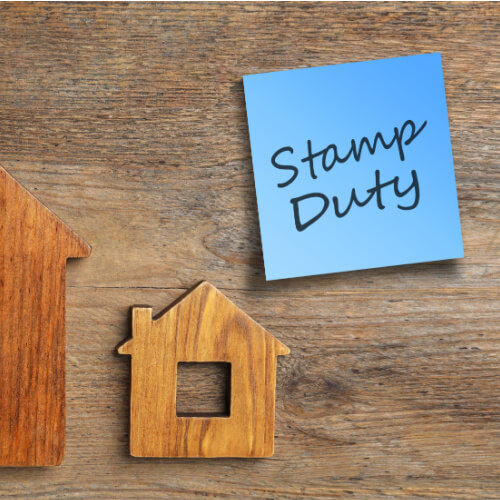 Written by James Hurwood
Written by James Hurwood
Reviewed by Stephen Zeller
Last updated 09/01/2024
Don't quite understand stamp duty? You might want to watch this explainer from Selling Houses Australia host, Andrew Winter.
![]()
Stamp duty is an important house-buying cost to account for, and it can end up being one of your most significant upfront expenses when buying property. Our General Manager of Money, Stephen Zeller has the following stamp duty tips for property buyers in the NT:
Stamp duty costs vary from state to state and from territory to territory. When calculating the applicable stamp duty on a home you are looking to purchase, double check to make sure you have selected the correct state/territory. Otherwise you could be under-estimating or possibly overestimating the fees applicable
Stamp duty is often forgotten when thinking about the total savings needed to purchase a home. Research what your stamp duty costs may be based on your own individual scenario when factoring in the savings you’ll need to purchase a property, or you could be disappointed down the road.
Our expert Home Loan Specialists are available via phone or email to help you with any queries regarding how much stamp duty you may need to pay for your home purchase in NT, as well as any other questions you might have.
The NT’s stamp duty thresholds and rates are simple compared to Australia’s other states and territories. Instead of charging flat sums with a sliding scale percentage amount attached, the NT simply deals in flat percentages based on the property’s purchase price for the most part (with the exception of the first tier).
The NT stamp duty rates (as of September 2022)¹ are listed in the table below.
| Property value | Rate of stamp duty payable |
| $525,000 or less | (0.06571441 x V²) + 15V (where V is 1/1000 of the property’s dutiable value) |
| $525,000-$2,999,999 | 4.95% of the property’s dutiable value |
| $3,000,000-$4,999,999 | 5.75% of the property’s dutiable value |
| $5,000,000 or more | 5.95% of the property’s dutiable value |
This makes ballparking the stamp duty you might pay on a property transfer much easier. Say you purchase a property for $700,000; this would attract a payable duty of 4.95%, which is equal to $34,650. So, that’s how much you would likely pay in stamp duty on your property purchase.
Unlike some other Australian states and territories, the NT doesn’t have different stamp duty rates for investment properties vs a principal place of residence.
According to the NT Government, property-related transactions considered ‘dutiable’ (i.e. will attract a title transfer fee) include:²
The upshot of this is that if you buy an established home, vacant land or a combination of the two, you’ll most likely pay stamp duty on that purchase. This applies regardless of whether you’ve bought an investment property or a primary residence.
In the NT, stamp duty must be paid no less than 60 days after either:²
However, most buyers will generally have engaged the services of a solicitor or conveyancer during the homebuying process, and they will typically handle the stamp duty payment.
Stamp duty must be paid to the Receiver of Territory Monies (the NT revenue office).² However, if you’re working with a solicitor or conveyancer, they will generally handle the payment of your stamp duty on your behalf.

As of 30 June 2021, first home owners in the NT are not eligible for any stamp duty concessions or exemptions and must pay the full applicable duty on their first property purchase.³
The NT has one stamp duty exemption available: the House and Land Package Exemption (HLPE).⁴ To be eligible for this full stamp duty exemption, you must purchase a house and land package from a building contractor before 30 June 2027, and in turn, the contractor must do one of the following:
Additionally, the contractor must have bought the land in question from a developer and paid the applicable stamp duty on the purchase of said land. There are no means testing measures or price caps for the HLPE.
Unlike in some other Australian states and territories, the NT does not have any home owner discounts or concessions for eligible pensioners.
As of September 2022, foreign purchasers must pay the full amount of stamp duty applicable on any property purchase they make. However, unlike some of Australia’s other states and territories, the NT does not impose an additional stamp duty surcharge on foreign borrowers.
![]()
Stephen has more than 30 years of experience in the financial services industry and holds a Certificate IV in Finance and Mortgage Broking. He’s also a member of both the Australian and New Zealand Institute of Insurance and Finance (ANZIIF) and the Mortgage and Finance Association of Australia (MFAA).
Stephen leads our team of Home Loan Specialists, and reviews and contributes to Compare the Market’s banking-relating content to ensure it’s as helpful and empowering as possible for our readers.
1 Northern Territory Government. STAMP DUTY ACT 1978. 2022.
2 Northern Territory Government – Department of Treasury and Finance. Frequently Asked Questions: Stamp Duty. 2022.
3 NT.GOV.AU. Home owner assistance. 2022.
4 NT.GOV.AU. Get stamp duty exemption on house and land packages. 2022.